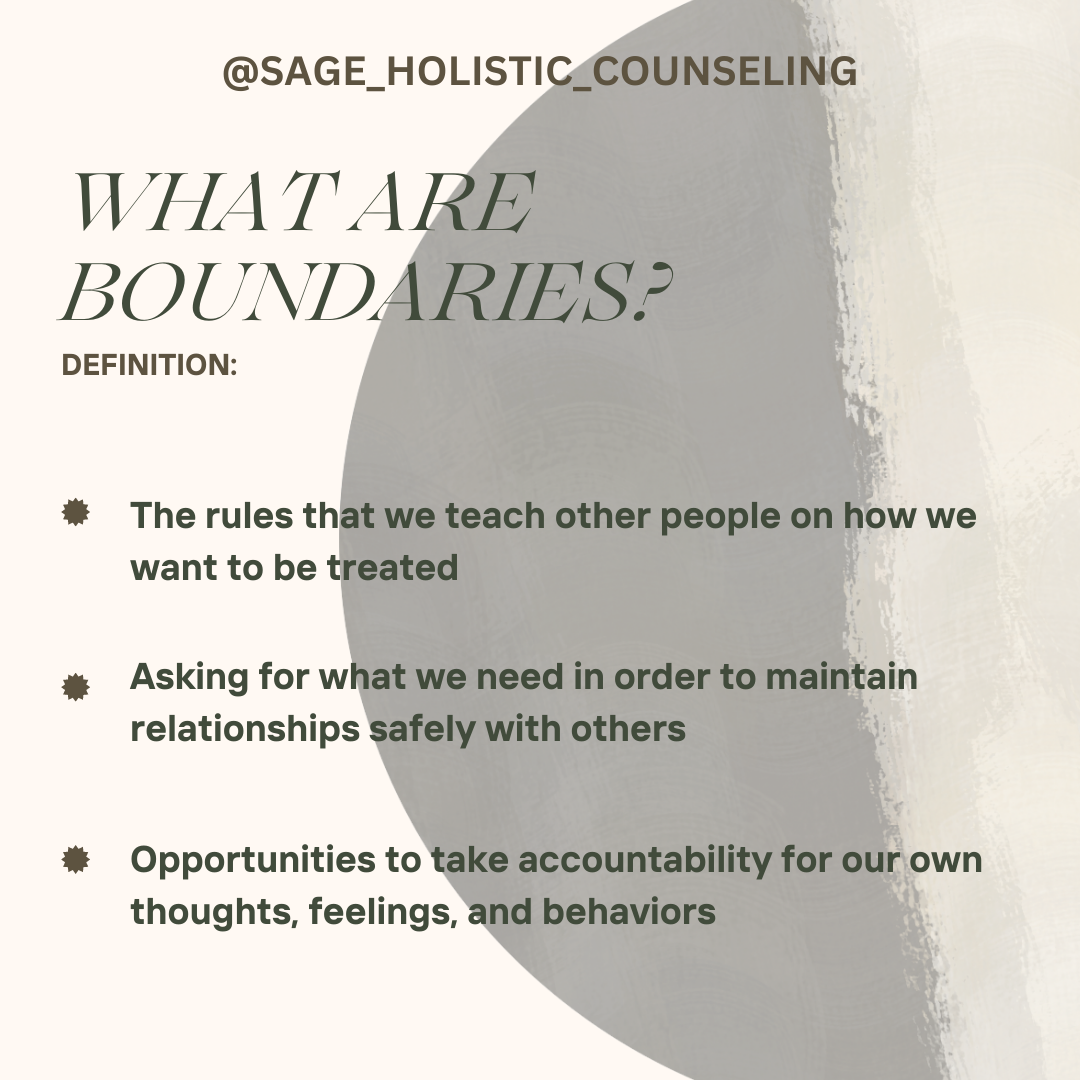what are Boundaries? Part one
What are boundaries?
Boundaries refer to the limits and guidelines that individuals establish to protect their physical, emotional, mental, and relational well-being. They define what is acceptable and unacceptable behavior, as well as the extent to which individuals are willing to engage with others or allow others to enter their personal space.
The Basics:
Boundaries can exist in various aspects of life, including personal relationships, work environments, social interactions, and self-care practices. They play a crucial role in maintaining healthy relationships, fostering self-respect, and preserving individual autonomy. Boundaries exist on a spectrum and are culturally and situationally bound. For example, you will not talk to your sister the same way you talk to your boss. Additionally, personal space looks very different in the US than in other places.
Boundaries can be both external and internal. External boundaries involve setting limits on physical touch (sexual intimacy is also included here), personal space, and privacy. For instance, it may include deciding who can touch you or enter your home, establishing personal boundaries with friends or colleagues, or determining what information about yourself you share on social media. Internal boundaries, on the other hand, pertain to emotional and mental limits. They involve recognizing and respecting your own feelings, thoughts, and values, as well as communicating them effectively to others. Internal boundaries allow individuals to protect their emotional well-being by not tolerating disrespectful or abusive behavior, setting limits on their emotional availability, and prioritizing self-care.
Establishing and maintaining healthy boundaries involves self-awareness, clear communication, and assertiveness. It requires understanding and respecting your own needs, desires, and limitations, as well as acknowledging the boundaries of others. By setting and maintaining boundaries, individuals can create healthier relationships, reduce stress, enhance self-efficacy, and foster overall well-being.
Loose Boundaries:
Overshares personal information at either the wrong time, wrong place, or with the wrong person
Says YES when you really mean NO
Fearful of rejection (not being liked) if express disagreement
Attempt to manage other’s experience, emotions, and behavior (i.e. I don’t want them to be upset)
Rule bending (i.e. not enforcing a no cell phone policy in your meetings)
Ignores and/or compromises our values/needs/wants in favor of other’s values/needs/wants
Difficulty asking for and accepting help from others
People pleasing behaviors
Leads to feelings of resentment and frustration in relationships
Give us a sense of purpose, being useful, and a clear role in relationships
If I were to imagine a picture of a loose boundary, I would imagine a vegetable garden surrounded by a tiny, metal white fence to keep the rabbits out. However, the fence doesn’t actually deter the rabbits. They jump right over and eat all the vegetables without regard to the “rules”. If we have loose boundaries, other people learn that our boundaries (our rules) don’t really matter - they can hop right over them without consequences. Just like with our vegetable garden, we become increasingly frustrated that our veggies are gone, but we still expect the tiny fence to stop the rabbits. Resentment and frustration grow, and eventually, we feel increasingly stressed and anxious. However, loose boundaries do give us a sense of purpose (“I’m the helper”) and a clear role. But, what happens when we are no longer able to compromise our values? We become afraid that we will rejected.
Ready to learn more about the opposite of loose boundaries and what healthy boundaries look like? Stay tuned for more next week on my series on boundaries.
